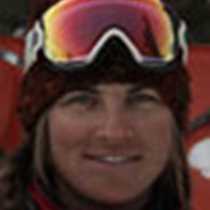Isla Magdalena
We traveled from San Carlos to the eastern side of Isla Magdalena for an incredible beginning to the week’s travels. On this voyage, many will be perfecting their photography practices, learning the detective work involved in hunting down just the right subject, manipulating the light and discovering how to use the tools at hand. A group of especially ambitious young Watsons went to shore before breakfast to capture images of the sunrise.
As we returned to shore later in the morning, we all got the opportunity to hone our detective skills. Some began in a gathering of mangroves to the south, where there were mostly three-pronged marks in the sand. These tracks belong to the reddish egrets, marbled godwits and long-billed curlews, among many others, that spend time amongst the mangroves along the shore.
We also ventured across the peninsula that creates Magdalena Bay, back to the shore of the Pacific Ocean. On the way we searched out animal tracks, clues leading us to what we might find along our way. The distinct, four-padded mark of the coyote; the smaller, black-tailed jackrabbits; smaller still, the finely clawed print of a mouse; the sidestep of shelled toes from ghost crabs closer to shore; and then the never-ending winding “s” left by a snake. There were also wonderful photos to be had of the sea purslane and sand verbena, whose existence are actually key in sometimes holding the dunes of sand together as they come and go with the ocean winds.
In the afternoon, the National Geographic Sea Lion moved back out into the Pacific to travel north and to begin the first whale-watching of the voyage. We were immediately graced with the company of common dolphins at lunch, coming to play on the wave created by the ship’s bow.
In the early evening, we came upon even larger subjects, though they showed only the tiniest bit of their magnificence to our camera lenses. These were the gigantic blue whales, the largest animal in the world, as well as the fin whale. When they came to the surface to breathe, they would generally leave a series of flat patches of water from the currents their tails created. Similar to the footprints we had seen earlier in the day, these patches of water gave us a pattern to follow so we knew where to next poise our cameras.
With the setting of the sun, everyone on board had gathered new data, techniques and captured images to carry with us through the rest of our voyage.
We traveled from San Carlos to the eastern side of Isla Magdalena for an incredible beginning to the week’s travels. On this voyage, many will be perfecting their photography practices, learning the detective work involved in hunting down just the right subject, manipulating the light and discovering how to use the tools at hand. A group of especially ambitious young Watsons went to shore before breakfast to capture images of the sunrise.
As we returned to shore later in the morning, we all got the opportunity to hone our detective skills. Some began in a gathering of mangroves to the south, where there were mostly three-pronged marks in the sand. These tracks belong to the reddish egrets, marbled godwits and long-billed curlews, among many others, that spend time amongst the mangroves along the shore.
We also ventured across the peninsula that creates Magdalena Bay, back to the shore of the Pacific Ocean. On the way we searched out animal tracks, clues leading us to what we might find along our way. The distinct, four-padded mark of the coyote; the smaller, black-tailed jackrabbits; smaller still, the finely clawed print of a mouse; the sidestep of shelled toes from ghost crabs closer to shore; and then the never-ending winding “s” left by a snake. There were also wonderful photos to be had of the sea purslane and sand verbena, whose existence are actually key in sometimes holding the dunes of sand together as they come and go with the ocean winds.
In the afternoon, the National Geographic Sea Lion moved back out into the Pacific to travel north and to begin the first whale-watching of the voyage. We were immediately graced with the company of common dolphins at lunch, coming to play on the wave created by the ship’s bow.
In the early evening, we came upon even larger subjects, though they showed only the tiniest bit of their magnificence to our camera lenses. These were the gigantic blue whales, the largest animal in the world, as well as the fin whale. When they came to the surface to breathe, they would generally leave a series of flat patches of water from the currents their tails created. Similar to the footprints we had seen earlier in the day, these patches of water gave us a pattern to follow so we knew where to next poise our cameras.
With the setting of the sun, everyone on board had gathered new data, techniques and captured images to carry with us through the rest of our voyage.




